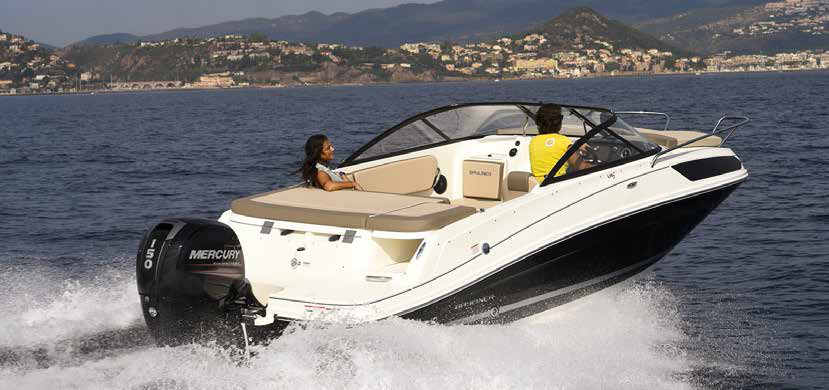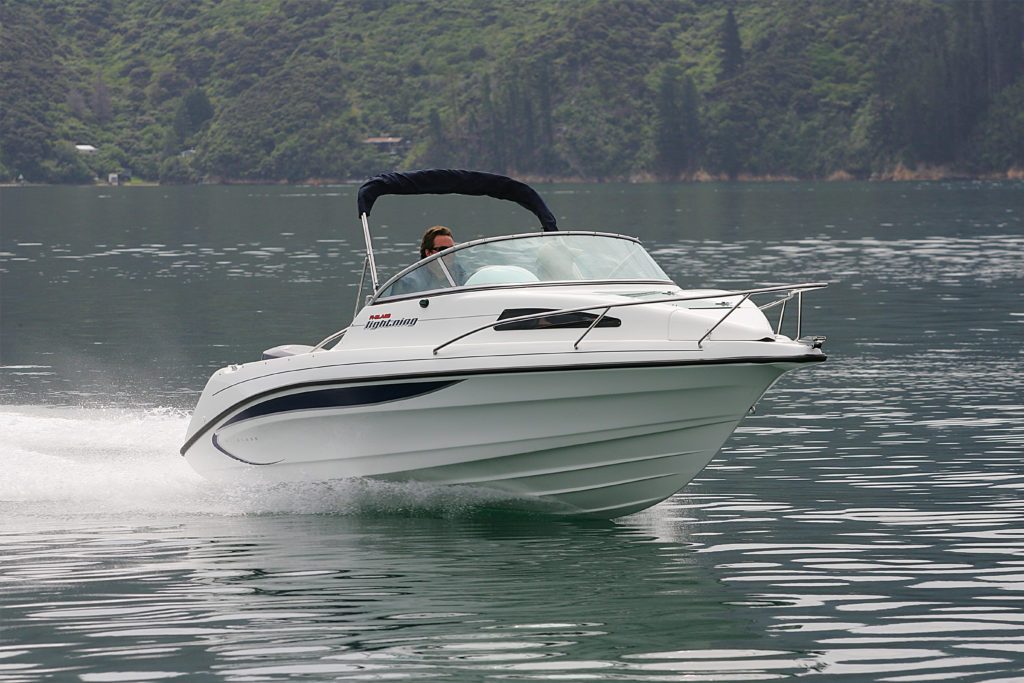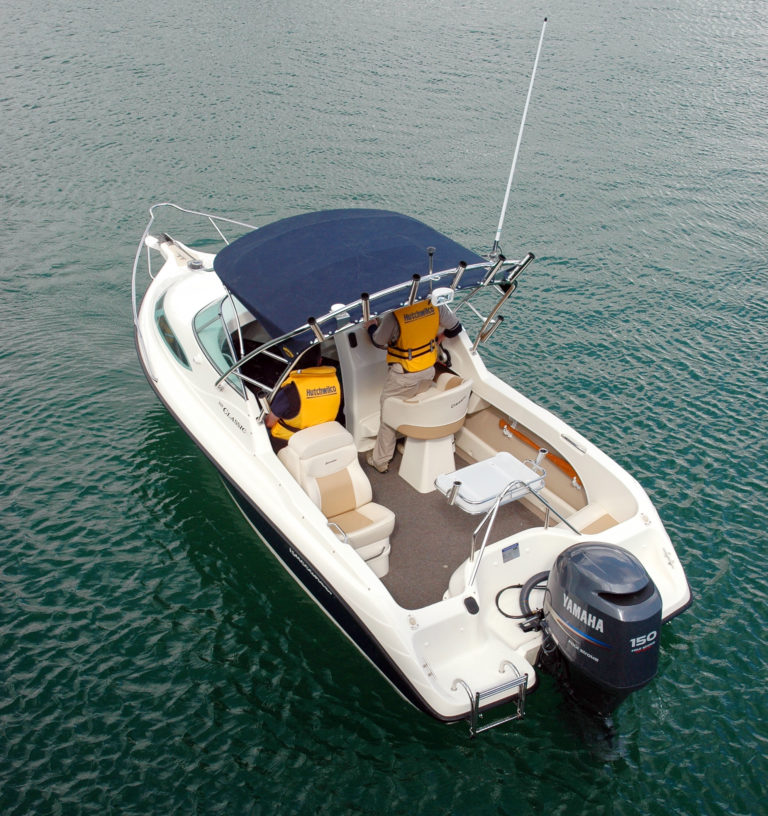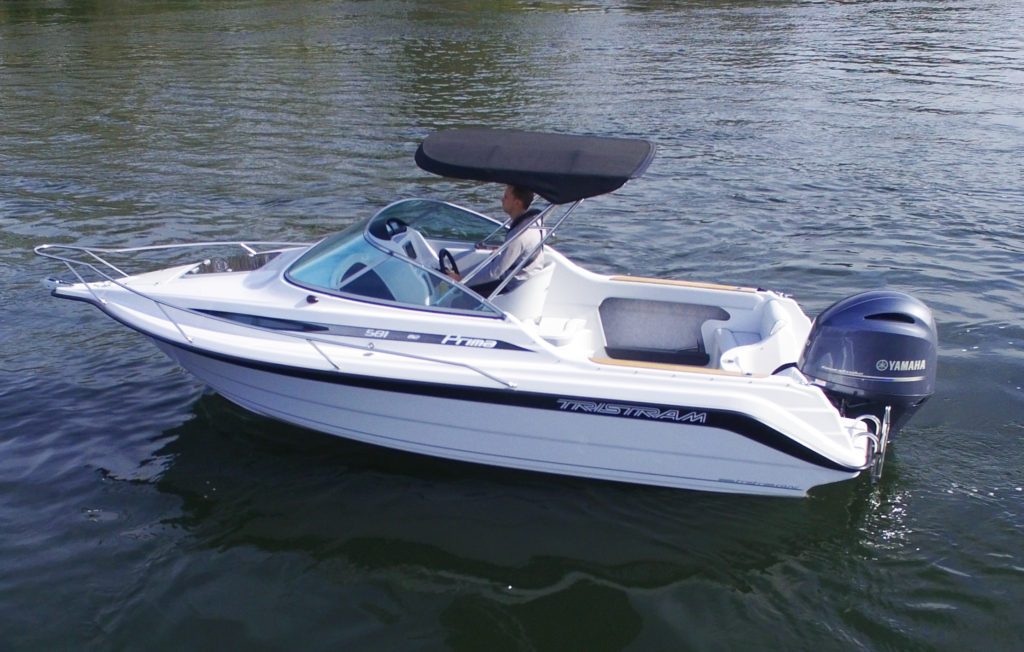If a boat is advertised as a 585, does that mean it is 5.85m long or is that the measurement of the hull only? Manufacturers vary in the way they present their models and while the NZ Marine CPC has strict guidelines for their member’s brand’s, it’s all very much up to the builder to measure as they wish. We looked at twelve different but similar ‘sized’ fibreglass cabin boats to find out just how much they vary.
Buying a boat can be a daunting task, especially if you don’t have an allegiance or feeling towards any particular brand. However, if you arm yourself with some basic facts, especially specifications on the boats you are considering, you will be able to make a more informed decision.
The length of a boat is one of the most important factors affecting the boat’s price. Obviously, a 7m boat is going to cost more than a 6m boat of a similar style and fit out, but are you getting an extra 1m in length of useable boat. The represented length as advertised does not always reflect the true size of the boat, so it pays to check. With the advent of integrally moulded bow pulpits and built in swim platforms, there has been a lot of confusion over how a boat length should be properly represented. Are they part of the hull or not?

We have put together a list of mid-size grp cabin boats that between them have overall lengths from 5.70m to 6.23m, but actual hull lengths (sans any overhangs) around 5.50m to 5.80m. But there you go, what is hull length? There are a number of ways in which a boat is measured. Firstly there is the measurement taken along its centre line from the outside of the boat aft to the outside of the boat forward. This measurement includes any attachments such as moulded swim platforms, outboard motors, bowsprits, etc. This measurement is called the length overall (LOA).
Then there is the length of the hull (LOH), that is the actual moulded hull from the bow (less overhangs) to the rear of the transom. But here too, there is room for interpretation, as to what is part of the hull and what is not. We have both built-in or bolt-on pulpits as well as swim/boarding platforms, so should they be included? Bolt-ons are certainly additions to the hull and should not be included. However, when it comes to Portofino sterns and boarding platforms if they are a part of the hull mould they probably should be included in the hull length measurement. This is still a bit of a grey area and while the NZ Marine CPC guidelines state that anything on the transom that is a moulded part of the hull should be included as the LOA, not everyone agrees. Some regard the transom as the true aft end of the boat and that the measurement for hull length should be taken from there to the tip of the bow.
It’s therefore not correct to assume the 6m boat you are buying has a true 6m hull, as even taking out the bowsprit, you will conceivably have more than ½ a metre of overhang from the transom. While the overhanging platform is usually still part of the hull and deck mould, it does not accurately reflect the area of the hull that is in the water when underway, but it is useable space.
It can be very confusing and while manufacturers certainly use the boat length as a marketing tool – “The biggest 6m boat on the market”, all it takes is a tape measure if you really want the facts.
You may also hear the term length of waterline or load waterline (LWL). This is the length of the boat, parallel to its centerline, at the line where it meets the water. It’s where you see the painted stripe around the hull on a moored boat. However, this isn’t a term used commonly for trailer boats and more applicable to larger launches and cruisers.

As we are looking at a group of trailer boats, the beam is not something that needs a lot of consideration as the limits for towing keep that generally below 2.5m. You can go up to 3m with permits, but in a boat of 5.5m-6m, they are usually under the 2.5m limit. The beam of our thirteen models varies from 2.22m for the Haines Hunter SF545 to 2.55m for the Bayliner VR5, with an average for all models of 2.32m.
Inside Space
Looking at the boat from the outside can give the wrong impression as to actually how big the boat is internally. While each of the boats has their very own style of layout, they are all in fact very similar. There’s a cabin forward with twin berths, a starboard side helm console and a reasonably uncluttered cockpit.
As all the boats are cabin models, it also pays to check out the ratio between the cabin and the cockpit. Boats under 6m are not really designed as overnighters, although plenty of owners still spend a night or two away on their boats. If you are one of those, then make sure the cabin berths (usually two singles with an infill) are around 1.8m to 2m long. Cabin heights vary but as long as there is enough sitting headroom – about 1.1m – 1.2m – for at least two people you should be fine.
If you want a toilet, then a simple Port-A-Potti works fine and can be hidden under one of the squabs. A draw curtain across the bulkhead opening will give you the privacy you need.

If fishing is your thing, then the cockpit layout is all important and you need to make sure there is plenty of uncluttered space to cast a few rods. Deep toe kicks, rod rack storage either overhead in a rocket launcher or in side trays, bait and catch lockers and a good bait station is all important.
A lot of these things can be added after and if you are going to use the boat for multi-purpose, such as towing water toys and family outings, it pays to have removable items so you can change things like the bait board for a ski pole and fish bins for seats.
Seating is another area where the options are variable and most manufacturers are happy to accommodate your needs. Twin single buckets forward are great if you are a hard-out fisho, but twin back to backs and an aft bench seat are more suited for family boating.
An important measurement to look at is the coaming height. A higher coaming is not only very beneficial when fishing, but is also a good safety feature, particularly when children are on board. While the coaming heights weren’t gigantic, they were adequate for boats of this size. Somewhere around 800mm is a good guide.
When comparing any of the boats listed, it is also important to find out what you are getting for the price. What options are included as standard and what do you need to add to make the rig complete? Because of the items that some manufacturers offer as standard, – some even come with winches and electronics, rocket launchers and toilet – the final RRP for a new boat is quite diverse. These varied from around $NZ48,000 to over $NZ75000 on a single axle unbraked trailer, with a 150hp outboard. So it pays to study just what you are paying for and how much the final rig is going to cost once you have ticked all the options on the list.
Hull Shape
Deadrise is also something to look at when comparing boats and in our lineup that varied from 18.5 deg for the Challenger 595 to 24 deg for the Seaforce 600. Average deadrise at the transom was just over 20 deg.
The deadrise of the hull, position of the strakes and width of the chines have a lot to do with how a boat rides and handles and every manufacturer has their own ideas. In reality, the difference of only a few degrees in deadrise is hardly noticeable. However, when comparing a shallow vee of say 14 deg as found on a lot of smaller alloy boats to an extra deep vee of 27 deg such as used under the Smuggler Stealth 720, the advantages of the deeper vee in rough water are evident. There can be a noticeable effect on stability at rest, although, in a lot of extreme deep vee boats, this is improved with a flooding keel.

If you get the chance, it always pays to do your boat test in rougher water so you can get a first-hand appreciation of just how the boat runs when the weather’s not so good.
While there is a difference in hull lengths, all thirteen boats share a conventional monohedreon (a geometrical figure having any number of planes) style hull with strakes, wide chines and a variable deadrise tapering from the bow to the stern.
Summary
The boats in this guide are close and not much separates them as far as size goes. There are a couple of imports, including two Kiwi brands now built in China. We have not included things like hull weight or trailerable weight as these will vary depending on engine options and how much gear you have aboard. However, as an estimate, towing weights would be anywhere between 1300 kg and 1500 kg and well below needing a tandem braked trailer. It would still be advisable to add surge brakes to the trailer, which not only adds extra safety when towing but takes you out of that 750kg unbraked tow rating applied to most large vehicles.

While we have listed a suggested RRP with a 150hp outboard, that price would drop by around $NZ4000 if you went back to an 115hp outboard. Your top end speed would drop by around 8 km/h, but you would still have enough power to tow skiers and you not only have the benefit of saving dollars on the engine purchase, but fuel costs would also reduce.
Choosing one of these boats in favour of the other comes down to personal choice. You may find one model might have a unique feature, which its nearest counterpart doesn’t, and that may just be enough to swing your vote that way.
Happy hunting.




